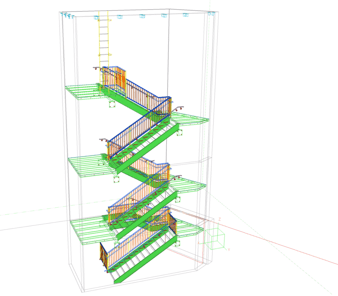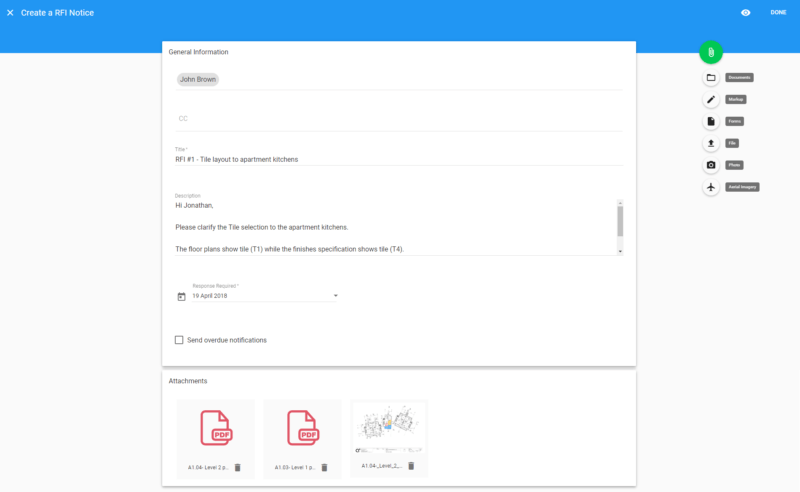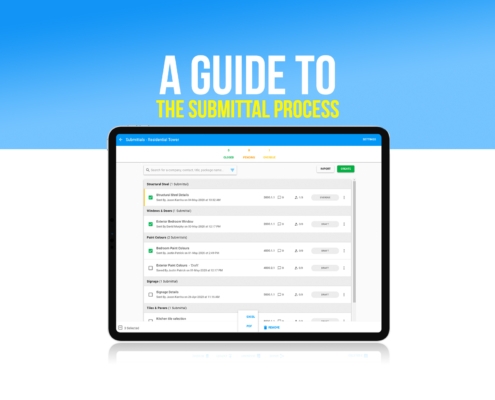Request for Information notices or RFIs is one of the most common, and unavoidable, admin processes for a construction project. It is always important for contractors managing a project that RFIs are managed efficiently to minimize delays and cost overruns.
A Navigant Construction Forum survey studied the impact of RFIs on 1,300 projects across the world. The study was undertaken in order to measure the impact of RFIs management on construction projects and offer recommendations on how to reduce the number of RFIs and their potential impact on projects.

Impact & Control of RFIs on Construction Projects – A Research Perspective Issued by the Navigant Construction Forum
The report found that for every $1 million in project value, there were approximately 9.9 requests, with an average of 9.7 days from the creation to the close of an RFI. The cost of each RFI was determined to be approx. $1,080, and 21.9% of RFIs from the sample received no response.
Let’s look at the RFI process and some tips on how to manage that process efficiently for the benefit of all project stakeholders.
What is Request for Information (RFI) in construction?
For most construction projects, the agreement, drawings, and specifications may not address every small aspect of the work. Therefore, when clarification is required, an RFI document is issued which details the additional information required.
For example, this could be the main contractor asking the architect for clarification of a specification item, or a sub-contractor asking the main contractor for information regarding their specific part of the works.
Generally, RFIs are issued more often at the beginning of a project, such as the design or bidding stage. The inconsistencies that are addressed prior to work starting on site will help reduce delays during the construction phase.
RFIs also serves as a record of communication between the involved parties regarding the information requested and provided. This is invaluable in case of a dispute. It is important that all RFIs are accessible and archived in project folders or within your construction management software. Many RFIs when answered can lead to additional management processes such a Variation/Change Orders or Extension of Time (EOT) claims.
How is an RFI different from an RFP, RFQ, RFT?

If you’re new to the construction industry, it can take some time to learn all of the different abbreviations (there are a lot). Here are the most common ones for “Requests” with a short explanation:
- Request for Proposal (RFP) – Used to request proposals from contractors or suppliers for alternative solutions or innovations to achieve the required standard (e.g. material change or alternative building process).
- Request for Quotation (RFQ) – An opportunity for contractors or suppliers to cost a specific product or service.
- Request for Tender (RFT) – The process for contractors or suppliers to competitively submit a detailed tender/bid proposal to supply and complete the required construction service.
RFIs are most likely created after an RFQ or RFT has been issued but can be issued before or after an RFP is made.
What are RFIs commonly used for?

An RFI can be issued for literally any kind of situation where clarification or additional information is required. It can be used during all phases of a project (design, tender/bidding, construction). Mostly, RFIs are used to clarify aspects of the design and/or material selection within documents such as:
- Construction plans
- Specifications
- Contract clauses
- Building standards
Setting RFI standards in your Construction Company
The most significant factor is that everyone in your company must understand the importance of the RFI management process, and is aware of your company’s related policy and procedures.
It is easy to have a verbal conversation with a client or contractor to seek clarification. However, if you don’t have that information documented in black and white you may be liable for the additional costs involved in case of a dispute over what was agreed.
You will need to ensure that your RFI procedures are understood and followed by the entire company, and that all conversations and clarifications are backed up with formal RFIs, and that responses are logged for future reference.
What should an RFI look like?
Using a well-designed RFI template ensures that it contains all the relevant information for the project. The following are some of the crucial items to be included in your RFI template:
- Project name
- Date of RFI
- Chronological number of RFI
- Details of addressees and recipients of copies
- Subject name or RFI title
- Information requested and why
- Date response is required by (i.e. not enough to just say ASAP)
- Specification, drawing and/or detail number reference (if applicable)
- Name of the RFI’s issuer
- Your Company details
- Date of Response (when it is received from the addressees)

WeBuild Software RFI Tool
Using technology to improve efficiency
New technologies provide a great tool to improve the efficiency of construction management processes, and almost all construction management software will include a feature to manage the RFI process. It is important to check that all the relevant information (see the above point) is included in any potential software solution.
You should also ensure that the collaboration process for RFIs is effective within a potential software solution. Your teams must be able to simply send, receive, respond and close RFI notices online, and to share them with their workmates and other project stakeholders. Effective online collaboration will prevent delays, mistakes, and overall frustration.
It would also be very beneficial if parties outside your organization can access project information without having to register on your chosen software system. It is also important to use a software solution that can be easily accessed on any mobile device, which allows your team to issue new RFI notices from anywhere on the job site.
Read your Construction Contract
When submitting RFIs, you should have a sound understanding of the contract that you’re working with. Be aware of how to submit RFIs under your construction contract, the response timeline, and when you can claim for delays if they occur because of a lack/delay of responses to your RFIs.
Generally, a construction contract will state that responses to RFIs are to be made within 10 working days of the receipt of the request.
Conclusion
Ensuring that your project teams are aware of the importance of RFIs and follow the company’s standard procedures will lead to a reduction in the risk of potential disagreements, which can lead to unforeseen costs. In summary, the following steps will enable you to manage the RFI process successfully for every project:
- Submit RFIs as soon as the need for further information is recognized.
- Allow for responses to be received as stated in the construction contract.
- Limit each RFI to a specific topic as opposed to including many different questions.
- Add all supporting documentation such as plans, specifications, or photos.
- Have a clear company RFI template and record all responses.
- Close RFI notices after they have been answered satisfactorily.
- Allow easy access to RFIs for the entire project team.
Are you looking for an RFI solution for your Construction Projects? Feel free to book a time with us and learn more about how WeBuild’s solution can help streamline and automate your workflows.






